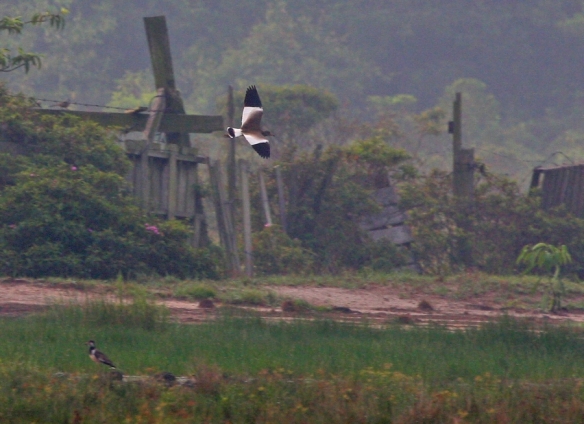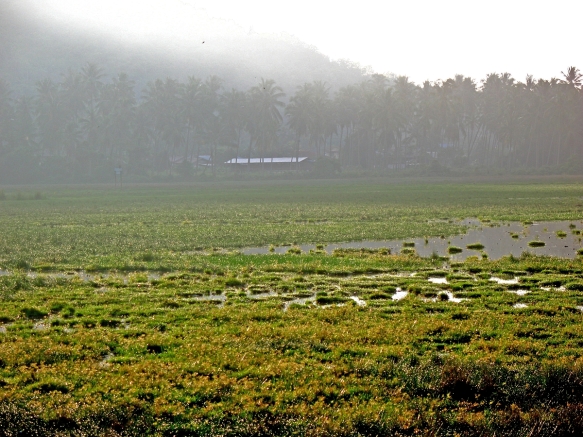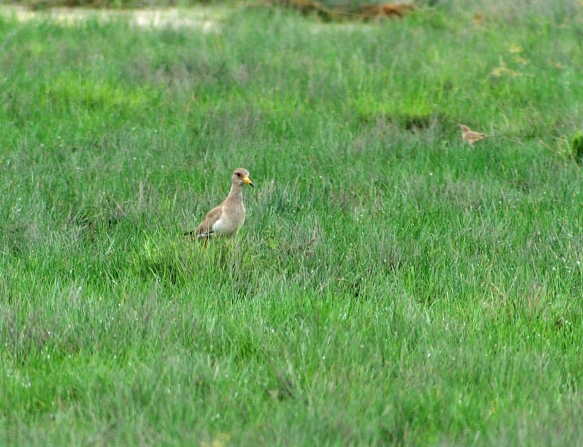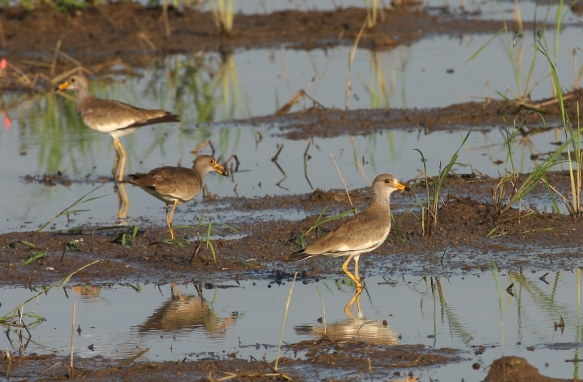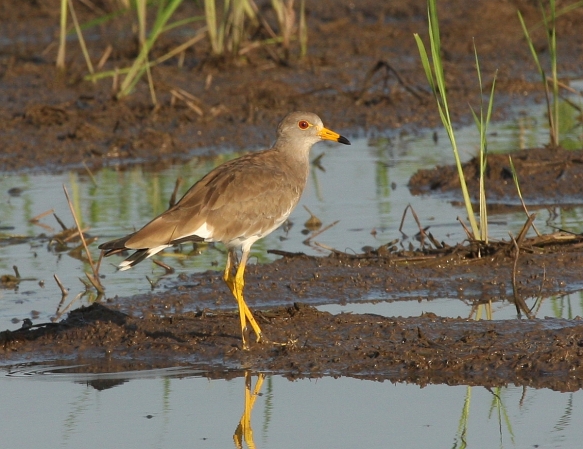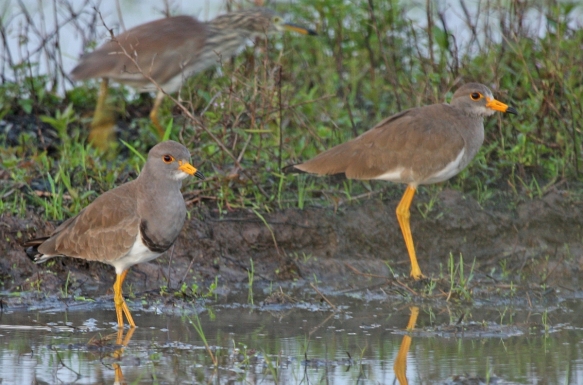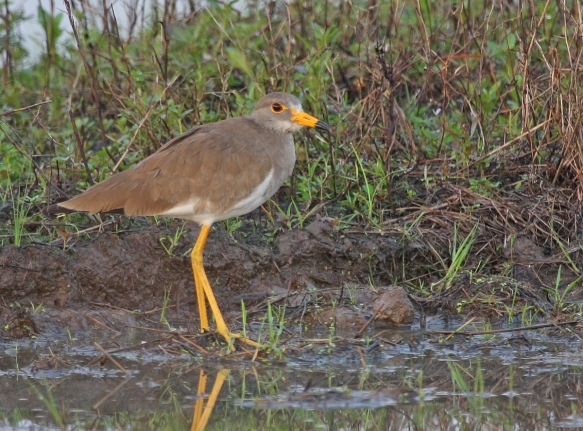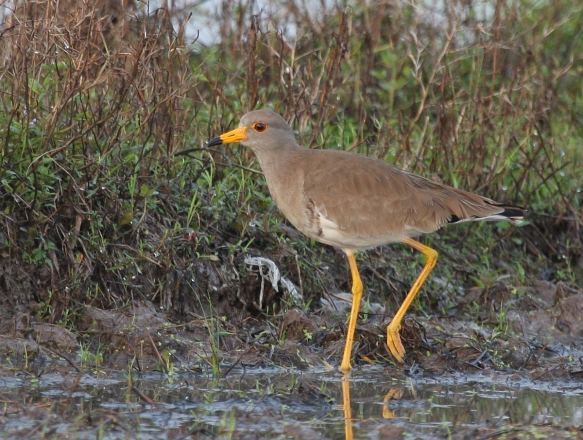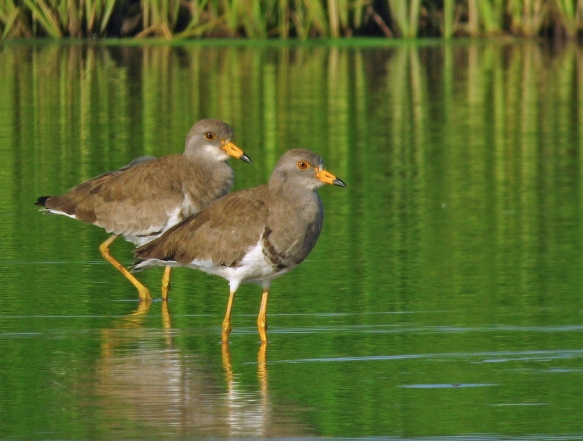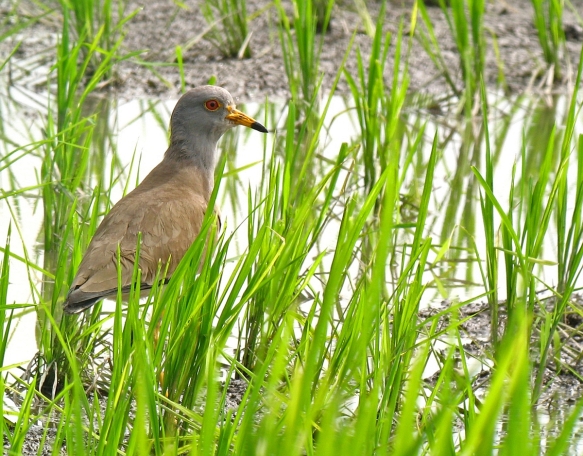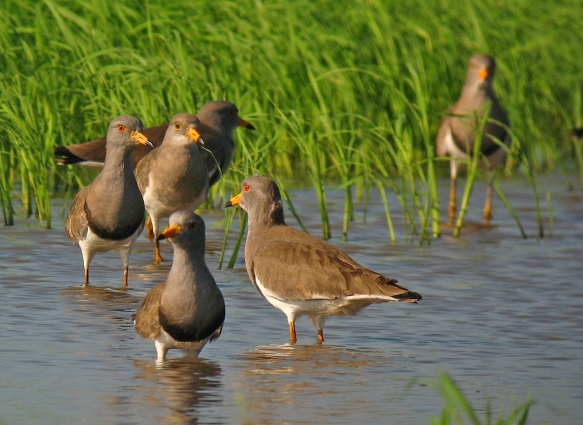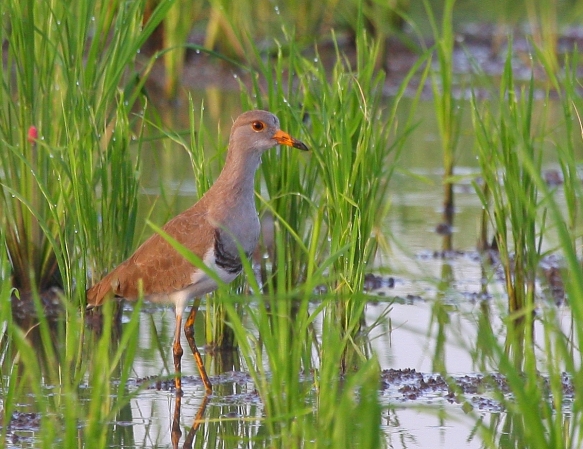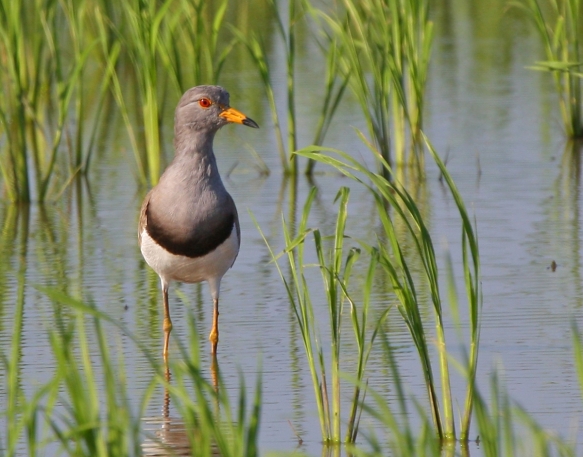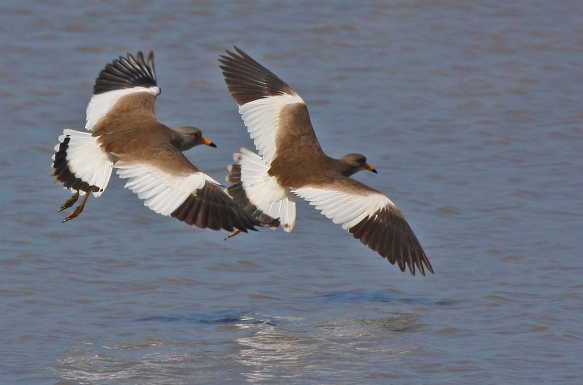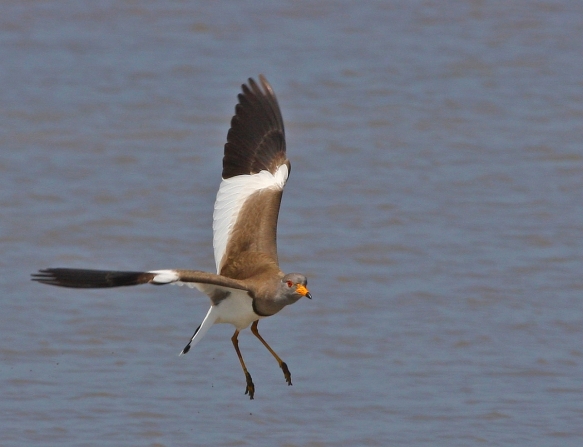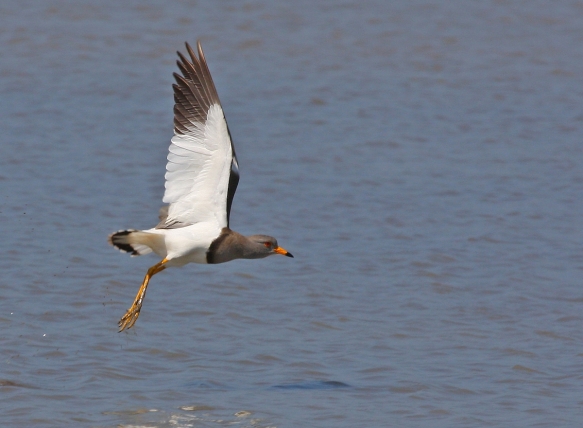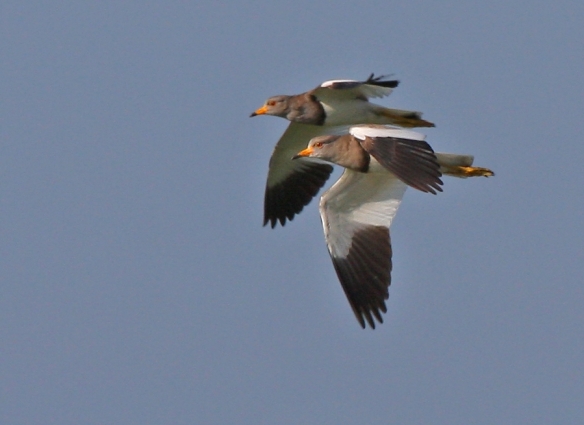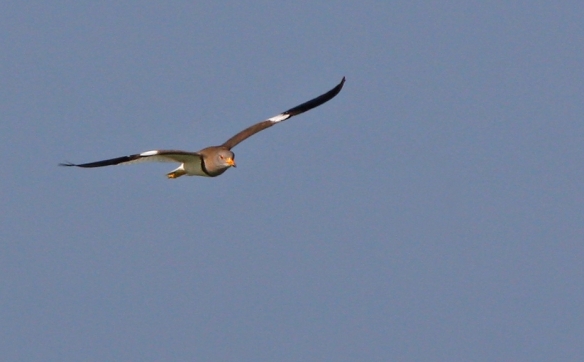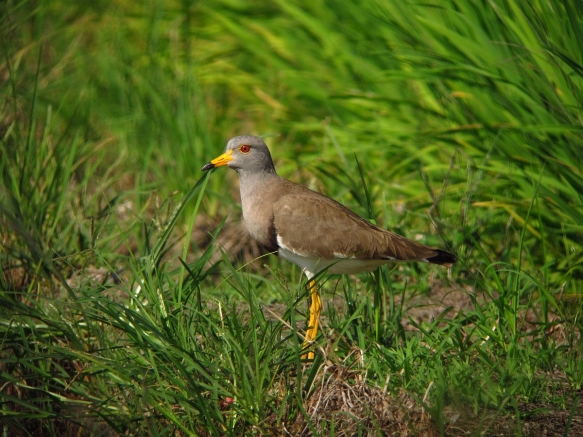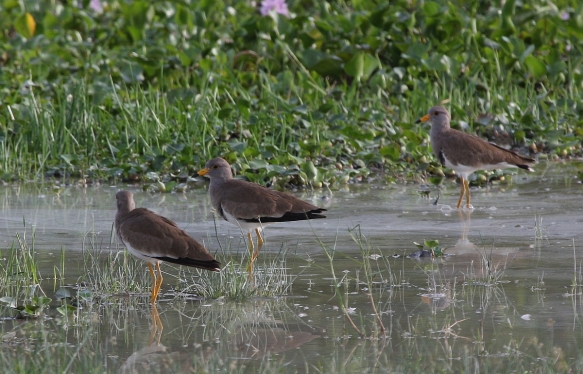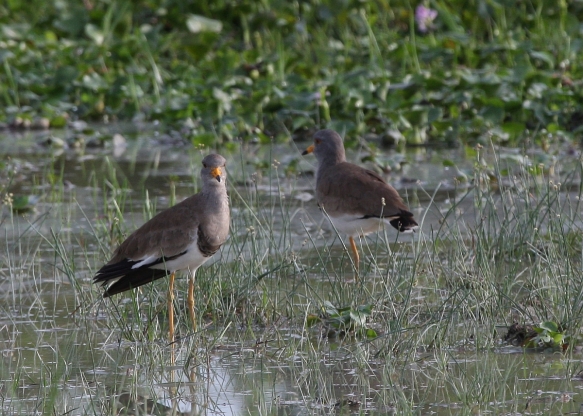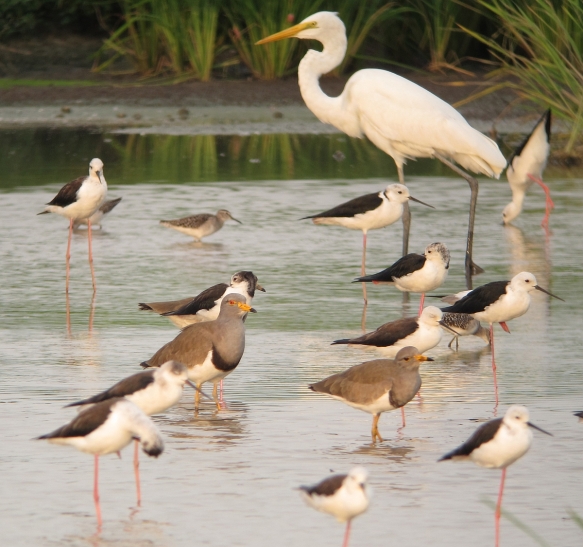Habitat
Wet paddyfields and buffalo pastures, grasslands around mining pools.
Status in Malaysia
Peninsular Malaysia: Formerly a scarce winter visitor, but numbers at favoured sites have shown a steady increase in the last two decades.
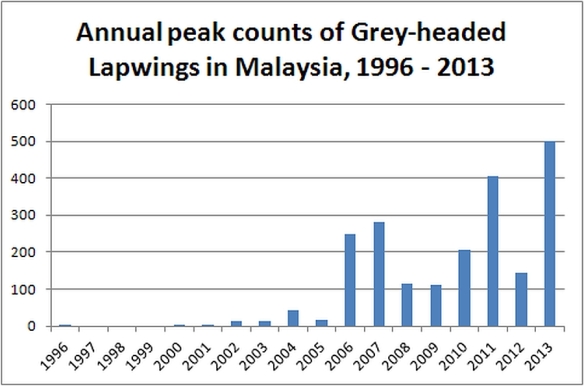
Source: Bird I* Witness Malaysia. http://birdlaa5.memset.net/worldbirds/malaysia.php
Arrives later than most other waders, the bulk in late October and November, and leaves earlier, with few records after the end of February. Overwinters.
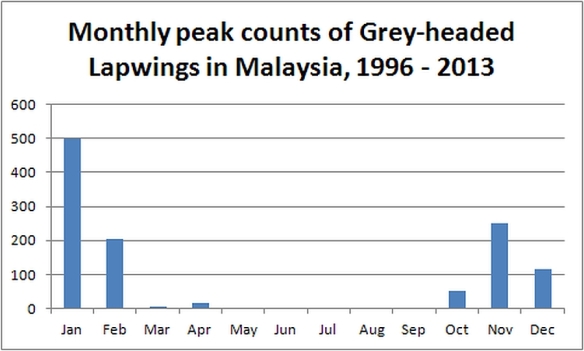
Source: Bird I* Witness Malaysia. http://birdlaa5.memset.net/worldbirds/malaysia.php
Faithful to particular sites where conditions are favourable; wintering flocks show a tendency to grow larger over the years.The largest flocks are recorded in Penang and Perak, although the species is probably under-recorded in States with less coverage.Perlis and Kedah may hold more sites than are known. Scarce east of the Main Range.
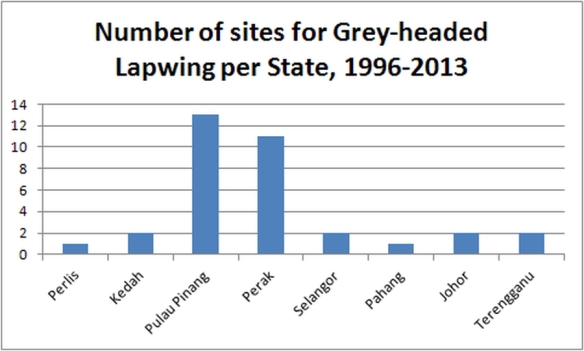
Source: Bird I* Witness Malaysia. http://birdlaa5.memset.net/worldbirds/malaysia.php
:East Malaysia: A vagrant, occurring less than annually, mostly in Sabah. Images of two first non-breeding plumaged birds are here and here.
September
This was an early arrival at the buffalo grazing field where a small flock winters in most years. Compared to Red-wattled Lapwing (in the foreground) Grey-headed has an upperwing pattern composed of three triangles, a more languid flight style, and is much less vocal.
October
Typical wintering Grey-headed Lapwing habitat.
Most juveniles lack the black pectoral band across the lower breast, and are weakly marked grey-brown, have dark eyes and no loral wattle. They also look ‘scrawny’, small-headed and thin-necked compared to adults. This is a rarely-seen plumage in Malaysia, as most have moulted into first non-breeding plumage by the time they arrive.
These first non-breeding plumaged birds can be aged by the dark iris (though later in the year, first years can show a much brighter eye colour), the white forehead, the lack of breastband (which can just be made out on the nearest bird) and the brown tones to the head.
November
Adults have a distinct black pectoral band across the lower chest. This is lacking in most juveniles (although at least some show a rudimentary breastband – see this juvenile in Japan) and first years.On many first non-breeding birds, the throat seems whiter than on adults, and there is often some white on the forehead too. On this bird, the yellow loral wattle is already adult-like, and the eye appears quite bright orange-chestnut.
This first year bird already has the beginnings of a breastband.
One interesting feature of both adult and first year non-breeding plumages in Malaysia is that they already seem quite worn. Adult Grey-headed Lapwings complete post-breeding moult before leaving the breeding grounds (by the end of July) and some juveniles may have completed their body moult into first non-breeding plumage by September. This means we rarely see fresh-plumaged birds in Malaysia.
December
The very red iris and grey head, including the crown and nape, indicate this is an adult.
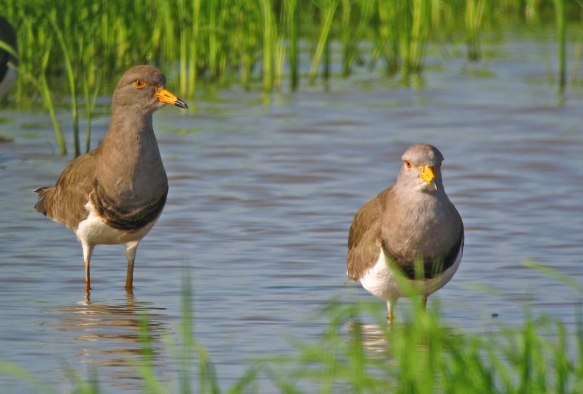
Adult non-breeding (right) and adult or 1st non-breeding (left), Permatang Pauh, Penang. 20 December 2008.
The bird on the right, with its grey head, bright iris and solid breastband, is clearly an adult. I’m not sure about the other one. The dull iris suggests immaturity, as do the brown tones in the head and breast.
The right-hand rear bird facing us is a first non-breeding, with its noticeably browner iris and lack of breastband.The rest seem to be adults.
There are at least 2 in first non-breeding plumage here.
A bird in first non-breeding plumage with a well-marked breastband. The brown iris, the white throat and brown tones in the grey suggest immaturity, and the bird has the angular headshape and scrawny look of a young bird. Note: Juvenile waders don’t usually look structurally different from adults, but in the case of lapwings, young birds look appreciably less ’rounded’ than adults.
By contrast, an adult has fuller contours.
The tail band of the first year bird is markedly browner than that of the adult. The trailing edge of wing of the adult lacks the uniform neat appearance of the first year bird.
January
February
By February, the effect of feather wear is to make grey areas look greyer (the brown edges are worn off) and black areas to look blacker (the whitish edges are worn off), making first year birds at this time of year harder to age. The white throat, dirty grey head and neck, dark-looking iris and poorly-developed breastband suggest that these are not adults.
All of these differences become more obvious when an undoubted adult is available for comparison!
References
Chandler, R. 2009. Shorebirds of the Northern Hemisphere. London: Christopher Helm
Hashimoto, N. Shorebirds in Japan: http://shorebirds.exblog.jp/i6
Jeyarajasingam, A. 2012. A Field Guide to the Birds of Peninsular Malaysia and Singapore. Oxford: Oxford University Press
Mann, C.F. 2008. The Birds of Borneo: An Annotated Checklist. BOU Checklist No. 23. Peterborough: BOU
Wells, D.R. 1999. The Birds of the Thai-Malay Peninsula. Volume 1 – Non-passerines. Academic Press: London
This is a community resource! If you’d like to contribute photos or suggest amendments, please contact me. Photos should have been taken in Malaysia or Singapore, and be accompanied by the date and location details. Minimum resolution = 900 pixels along the horizontal edge.

